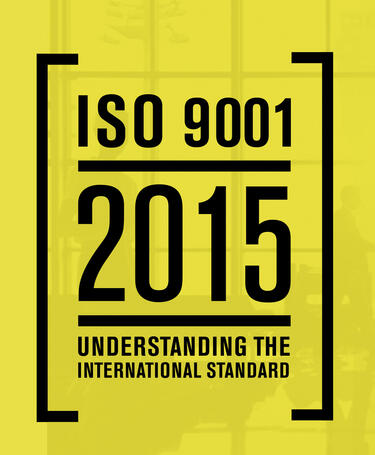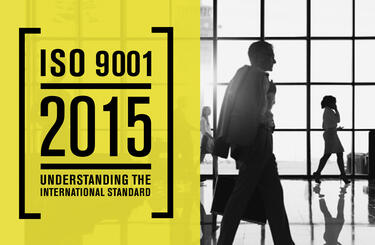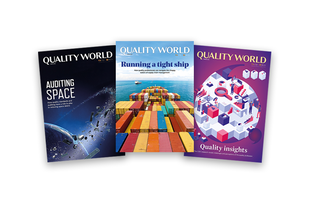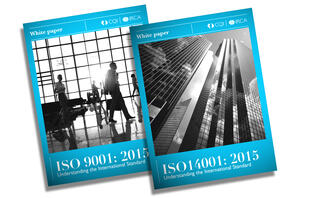
ISO 9001:2015 quality policy objectives

Andrew Holt examines how ISO 9001:2015 sets out the development and communication of the quality policy and what this means for quality professionals.
It is in sub-clause 5.2.1 of ISO 9001:2015 that sets out the requirements of top management in respect of the organisation’s quality policy.
Top management must establish a quality policy that is appropriate to the purpose and context of the organisation and critically, it must support its strategic direction.
It must also provide a framework for the setting and review of quality objectives, include commitments to satisfy any applicable requirements and to continually improve the quality management system.
It is the responsibility of top management to implement and maintain the quality policy.
Implications for quality professionals
ISO 9001:2008 requires top management to “establish” the quality policy (5.1), and to “ensure” that it is reviewed for continuing suitability. It requires top management to “establish, implement and maintain” a quality policy.
ISO 9001:2015 requires that the quality policy is also appropriate to the context of the organisation, not just its purpose.
This will require the review and possible update of the organisation’s quality policy if there is any change in the context of the organisation or the relevant requirements of the applicable interested parties.
Another reinforcement of the concept that the QMS is not just an add-on to business is a crucial requirement that the quality policy is in tune with the organisation’s strategic direction.
Any change in strategic direction will now require a rethink of the quality policy.
The policy must include a commitment to continually improve the QMS. ISO 9001:2008 required a commitment to continual improve the effectiveness of the QMS.
The policy must now provide a framework for the setting and reviewing of quality objectives.
5.2.2 Communicating the quality policy
Sub-clause 5.2.2 sets out specific requirements in respect of the organisation’s quality policy communication.
As in the 2008 edition the policy must be available as documented information.
It must be communicated, understood and applied inside the organisation and must be available to relevant interested parties as appropriate.
Implications for quality professionals
As an item of documented information, the quality policy can now be held in any manner that meets the requirements of ISO 9001:2015 clause 7.5.
Quality professionals should note that there is now an explicit requirement for the quality policy to be applied throughout the organisation.
How this is done is up to the organisation, but linkage to quality objectives, process design, acceptance criteria, monitoring and measurement data and management review should be considered.
The new requirement for the quality policy to be available to relevant interested parties, as appropriate, means that the organisation will need to consider how this is done – on a website, social media, literature and flyers.
6.2 Quality objectives and planning to achieve them
Sub-clause 6.2.1 is an enhancement and extension of ISO 9001:2008 requirements. It requires an organisation to set quality objectives for relevant functions, levels and processes within its quality management system.
It is for the organisation itself to decide which functions, levels and processes are relevant.
The quality objectives must be consistent with the organisation’s quality policy and be relevant to the conformity of products and services, and the enhancement of customer satisfaction.
Quality objectives must be measurable, take into account applicable requirements, and be monitored in order to determine whether they are being met.
They must also be monitored, communicated across the organisation and be updated as and when the need arises.
An important change from 2008 is the deletion of the qualifier that quality objectives are “within the organisation”.
This recognises that externally provided processes, products and services may also need quality objectives assigned.
Information on the quality objectives needs to be maintained by the organisation as documented information.
Implications for quality professionals
This is an extension of ISO 9001:2008 sub-clause 5.4.1“Quality objectives”.
The requirement for quality objectives to be measurable and consistent with the organisation’s quality policy is carried across, as is the requirement for objectives to be set for relevant functions and levels.
New for ISO 9001:2015 are requirements to set quality objectives for relevant processes and to monitor progress against the achievement of objectives.
Also new is the need for the quality objectives to be relevant to product and service conformity as well as the enhancement of customer satisfaction.
Under ISO 9001:2015 there are explicit requirements for people doing work under the organisation’s control to be aware of the organisation’s quality policy, any quality objectives that are relevant to them, how they are contributing to the effectiveness of the QMS and what the implications are of them not conforming to QMS requirements.
Andrew Holt is technical content executive at the CQI and IRCA.
Member only

This article is free to access for a limited time only. Only CQI and IRCA members receive access to all content.
Get the latest ISO reports and resources

Our many reports and resources will help you achieve a smooth transition to ISO 9001:2015 and ISO 14001:2015.